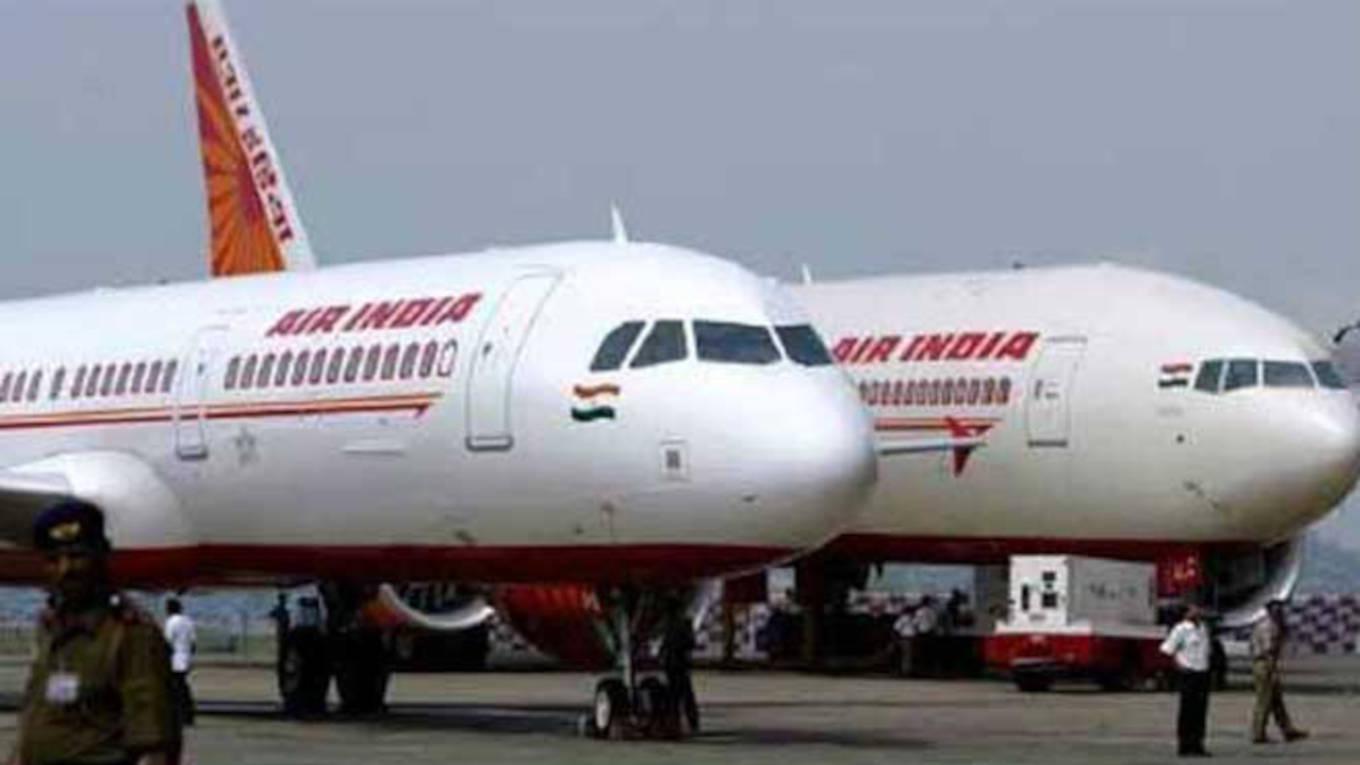-
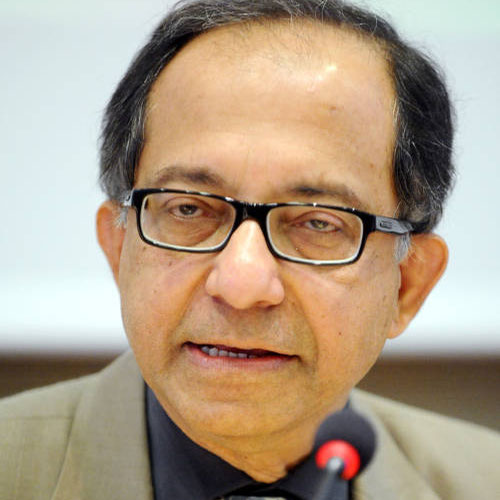
Problem of credibility
The idea suffers from a problem of credibility, which in turn stems from the Modi government’s penchant for flaunting headline-grabbing names and big figures periodically to burnish its image. Some of these ideas have floundered at the ground level. For instance, a sum of Rs1.75-lakh crore has been estimated in this year’s Budget from the sale of PSUs such as Air India and BPCL. But the government is yet to complete a single PSU sale.
In the previous budget for 2020-21, the government set an impressive target of raising Rs2.1 lakh crore from privatisation and sale of minority stakes in state-owned companies. This included Rs1.20 lakh crore from selling stake in Central PSUs and Rs90,000 crore from stake sale in financial institutions. But it had to revise the figure downwards to Rs32,000 crore due to adverse market conditions induced by the onset of Covid-19.
Covid-19 apart, just how slow things can move is illustrated by the sale of Air India, which has been like a soap opera where the story takes new twists and turns without reaching anywhere. Though the process of sale is now said to have reached the third stage, with the bidders completing the due diligence process, the government really hasn’t covered itself with glory over the way it has gone about it. Last minute efforts are still on to sugarcoat the deal (see GNP).
Hence, many are convinced that the target of Rs6 lakh crore will never be achieved. Kaushik Basu, former chief economic advisor to the government of India and currently professor, Cornell University, feels that the government will be lucky if it succeeds in garnering even half of the targeted amount. Subhash Garg, former finance secretary, is even more pessimistic. He points out that the government in its second term began the monetisation of airports with a bang by granting 50-year rights to private players to run six airports. The Adani Group outbid rivals for all six and this led to charges of cronyism which were denied. Thereafter there hasn’t even been a single transaction.
“There is not much success anywhere else. Now, this particular plan which talks of Rs6 lakh crore over four years – that is Rs1,50,000 crore a year – is simply too ambitious. I do not think there is any likelihood of it getting done. The institutional mechanisms which we have created are also not at all conducive for this to happen. I honestly think that the government will not be able to deliver on it. If it does even 20 per cent of what it is saying, I would be very happy,” says Garg.
On top of that, fears are being expressed by no less a person that former finance minister P. Chidambaram that the whole exercise could end up in asset-stripping. This is a common problem in India. Last year, stressed firms had complained to the Reserve Bank of India (RBI) that asset reconstruction companies (ARCs) are indulging in asset stripping with the help of foreign funds. In a letter to the RBI, it was pointed out that after taking over the debt from banks, ARCs are giving backdoor entry to vulture funds through an effective “benami structure”, which is currently available only for reconstruction or securitisation companies.
-
If you have a Rs6 lakh crore monetisation plan, you need a new PPP ecosystem, you have to put the enabling conditions before you push policy through the system
13 sectors
Under the ambitious NMP, the government has identified 13 sectors – including airports, railways, roads, shipping, gas pipeline among others – which will be privatised as the government aims to monetise its brownfield infrastructure assets. The key to success will be monetisation of road assets worth Rs1.60 lakh crore over four years till FY25, which will be implemented by the Road Transport and Highways Ministry and the National Highways Authority of India (NHAI). The road assets considered for monetisation during FY22 to FY25 aggregate to 26,700 km, which is 22 per cent of the total National Highways (NHs). Amitabh Kant, CEO, Niti Aayog says the potential models of road assets monetisation would be Toll Operate Transfer (ToT) and InvIT.
According to the NMP document, the NHAI InvIT issue is envisaged to be privately placed and indicative value of the fund-raise from the current tranche underway is about Rs5,000 crore. “The fund-raise and issue listing is expected to be completed during FY22 subject to market conditions and stabilisation of toll revenues in the wake of Covid-19,” it said. But as Garg points out, “In roads, we have struggled. There have been only five packages so far of ToT. Two of them did not take off at all in last five years; we have only done three.”
Besides, once the roads and highways are monetised, the onus will be on the Central and state governments to provide an enabling environment to the companies to run their operations smoothly. But there are bound to be hiccups. For instance, the ongoing farmers’ agitation has forced the closure of about 50 toll plazas in Punjab and Haryana for the past eight months or so, with estimated losses being around Rs5 crore daily. Such disruptions won’t inspire confidence among investors.
Getting it right
Then there are the pitfalls. To overcome these, it will be essential for the government to get the nitty-gritty right for this grand plan.
First, like in disinvestment, controversies about valuations and processes will dog monetisation deals too. Second, while post-transaction troubles in outright sales can be of a limited nature, NMP deals could pose a long-term headache if they are not structured with end-user interests in mind, balancing the profit and utility motives.
Indeed, India needs to draw lessons from the pitfalls of the asset monetisation programme carried out in Australia. In New South Wales, for instance, electricity prices doubled in five years after poles and wires were privatised. The government had to step in with an Energy Affordability Package to lower the burden on consumers.
Thus the sharing of risk and rewards between the public and private partners needs to be weighed carefully for each sector. Third, a system of checks and balances is critical for actual infrastructure usage versus projections at the time of bidding.
-
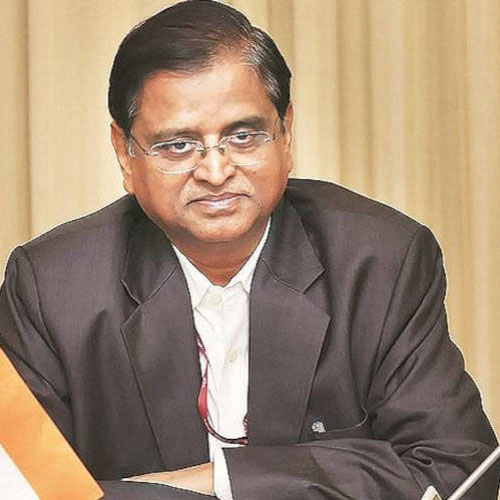
Whither new PPP models
While presenting the 2014 budget, then finance minister Arun Jaitley had promised to set up an apex body to devise new PPP models, learning from past mistakes. If the budget promise had been implemented and a new model had been implemented, India’s institutional capacity for the NMP would have been more mature by now. Vinayak Chatterjee, chairman of consultancy firm Feedback Infra, feels the plan is similar to the PPP initiatives of old. The government needs to create a comprehensive PPP concession model to ensure that the assets are successfully monetised as PPPs of yore are not in favour because the private investor is apprehensive based on past experience.
“If you have a Rs6 lakh crore monetisation plan, you need a new PPP ecosystem, you have to put the enabling conditions before you push policy through the system. And in this country, to give an operating utility for 30 to 60 years on a PPP framework is not an easy task. Across each of these sectors, very detailed PPP concession agreements will have to be brought up and that is not an easy exercise as the recent experience with the railway train privatisation and many other PPPs have shown.”
Critics say that the NMP is born out of the government’s desperation for garnering revenue – and it is showing. Even in the case of state-run companies not being divested, the government is pitching for a carve out of non-core assets or de-merging and selling them for this purpose. Such a desperate strategy carries its own risks. Just like disinvestment deals during a downturn could crowd out new investments and risk the tag of ‘fire sales’, revenue projections for PPP assets could be deflated now leading to lower bids followed by super-normal gains for the operator in the future.
Such reservations could fuel the opposition to NMP. Already, some chief ministers of opposition-ruled states like Mamata Banerjee of West Bengal, M.K. Stalin of Tamil Nadu and Hemant Soren of Jharkhand have opposed it. Asking the Prime Minister to keep the NMP on hold and consult all stakeholders and state governments, Stalin in a letter, has said that plan would only pave for priceless government assets going to a few conglomerates or large corporations.
State assets covered
The Modi government will need to politically hard-sell the NMP in the coming weeks as asset monetisation will be considered a success only if is not restricted to Central government undertakings. As a part of the plan, the government did well to factor in state government assets. The Central government will provide incentives to states for asset monetisation and disinvestment by state governments (including state government undertakings).
Additional allocation equivalent to 33 per cent of value of assets realised is envisaged to be deposited in the state consolidated funds (or the account of state government undertaking) owning the assets depending on the condition that the amount raised through asset monetisation is necessarily used for capital expenditure by states. Funds provided to the states under this scheme are meant for long term infrastructure creation within the state by restricting the use for new and ongoing capital projects or for settling pending bills in ongoing capital projects.
Thus, the NMP proceeds will address to some extent the financing gap for the National Infrastructure Pipeline. Here the Niti Aayog has taken a leaf out of the Australian Asset Recycling, wherein the National Government of Australia established an A$5-billion incentive programme in 2013 to provide state governments with an additional 15 per cent of the capital raised from recycled assets.
-
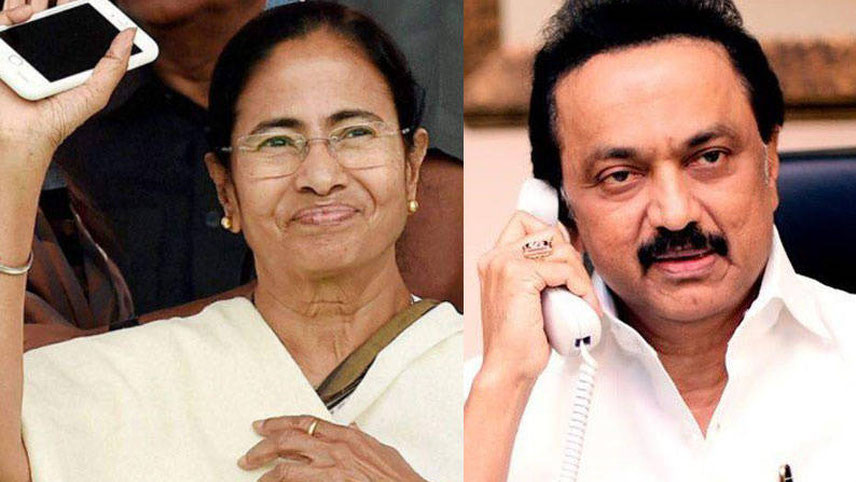
Mamata, Stalin: voicing concerns
If handled well and accepted by states, such a move will pave the way for a sizable monetisation of various state government assets including highways, energy distribution infrastructure, intrastate transmission networks, urban transport, bus depots, water supply & sewerage networks, gas pipelines (in certain states), sports stadium and district level sport complexes.
But the Modi government will have to tread with caution. In a note on the NMP, CARE Advisory & Research (CART) refers to the experiences gleaned from the road sector. “Investors have been wary of assets owned by state government (or its undertakings) partly due to a lack of track record of stable, predictable and enforceable agreement frameworks under the PPP route. Policy guidelines and a regulatory environment along with well-drafted sample contractual agreements that are enforceable in the event of disputes with established neutral/unbiased arbitration frameworks would be critical for success of the PPP mechanism. It’s imperative to have coherence between policies of the Central government and that of respective state governments. This is important in the country’s federal structure to decipher the cascading of policies that lead to a stable framework for any prospective investor.”
Old idea
Asset monetisation as an idea is not new. During the UPA years, companies like GMR and GVK were given the responsibility of upgradation and management of airports in Delhi and Mumbai respectively. The alliance government in Maharashtra has recently done an ‘asset monetisation’ of the Mumbai-Pune Expressway.
As for the BJP, Jaitley, while presenting his third budget on 29 February 2016, said, “We have to leverage the assets of CPSEs for generation of resources for investment in new projects. We will encourage CPSEs to divest individual assets like land, manufacturing units, etc. to release their asset value for making investment in new projects.” It just happens that the NMP idea has been unfurled a tad too late and at a time when the opposition parties are getting their act together and the seemingly invincible Modi dispensation has started developing chinks in its armour.
One of the issues that has dogged asset monetisation is sale of land. Till the idea of a National Monetisation Pipeline happened – and the government decided not to sell either government-owned land or assets as part of the programme – plans were afoot for monetising “idle land assets” of key ministries and departments, including Railways, Telecommunications and Defence, and using the resources generated to create infrastructure assets across the country. The trick now is to make the programme politically palatable by emphasising on long-term lease and not outright sale.
The Rail and Defence ministries are the biggest government land-owners in the country. According to the latest government data, the total land available with the Railways is 4.78 lakh hectares (11.80 lakh acres) of which 4.27 lakh hectares is under operational and allied usage while around 0.51 lakh hectare (1.25 lakh acres) is vacant.
The Defence Ministry, the biggest land-owner, has about 17.95 lakh acres, of which around 1.6 lakh acres is within the 62 cantonments, and about 16.35 lakh acres outside their boundaries, according to data from the Directorate General, Defence Estates. The ministry even carried out an assessment of land available for monetisation, which could be done through participation with other government entities.
-
There is not much success anywhere else. Now, this particular plan which talks of Rs6 lakh crore over four years – that is Rs1,50,000 crore a year – is simply too ambitious
Last lap
It is now obvious that land monetisation will happen only in the last lap. The government is firming up contours of a special purpose vehicle for monetising land available with public sector enterprises, which is likely to be on the lines of National Buildings Construction Corporation (NBCC) and could operate on a fee-based model. While several models for creating the special purpose vehicle have been considered, including the Canada Land Company’s model, the government has zeroed in on NBCC as it may be better suited to India.
Land assets of Central PSUs under closure and non-core land assets of CPSUs under strategic divestment would be pooled and then monetised by the company. If the titles of the land are transferred to the company then it would be able to earn from the sales, however if the titles remain with the CPSUs or ministries, a fee would be charged for the sale or development process. Freehold land will be transferred to this proposed firm, which will monetise it through direct sale or through the real estate investment trust or REIT model.
The company may have a similar structure to NBCC, which has operations in three key areas of project management consultancy, which includes redevelopment of government properties and is the largest revenue contributor. The other two areas are engineering, procurement and construction contracting and real estate development. The government plans to start with CPSUs under closure like Scooters India Ltd, Hindustan Flourocarbons Ltd, Bharat Pumps and Compressors Ltd and HMT, which may have land assets lying idle.
Hitting a bump
The government will have to move fast and with a lot of preparation. Recently, during a review of the telecom sector by the Prime Minister, the issue of selling the assets of Bharat Sanchar Nigam (BSNL) and its sister concern Mahanagar Telephone Nigam (MTNL) was flagged off by the department of telecommunications (DoT). It was revealed that the drive involving the beleaguered telecom undertakings has hit a bump, yet again, as it faces land use change hurdles in some states.
BSNL’s land holdings in Mumbai are any realtor’s delight. These include a barren 42.43-acre plot in Borivali, a 45-acre housing colony in Deonar, and a 3.5-acre plot in Juhu that boasts a guesthouse and a 12-storey residential building. These three land parcels are among the 14 assets BSNL wants to monetise to raise Rs20,000 crore in four years. Similarly, MTNL has 29 retail outlets in Delhi alone.
The sale of assets is a key element of the Rs69,000-crore plan the Modi government approved in December 2019 for the revival of BSNL and MTNL. The revival plan involves the merging of BSNL and MTNL, monetising their assets, restructuring debt by raising sovereign guarantee bonds, and rolling out a voluntary retirement scheme (VRS) to its bloated workforce of over 170,000 people. The government will also foot the Rs14,115 crore bill for the 4G spectrum it allocated to BSNL last October as well as the Goods & Services Tax payable for the same.
But, as official point out, the land assets have various issues and encumbrances associated with them – for example, seeking the removal of designation, reservation, encroachment, mutation, apart from change of land use. Indeed many of the parcels require change of land use to get the best value. BSNL and MTNL, which shortlisted 14 properties, have started the process of change of land use by submitting applications to the relevant authorities. An attempt by DoT to auction four of these properties ended in a fiasco: the properties were valued even below their circle rate. DoT had to scrap the auction.
-
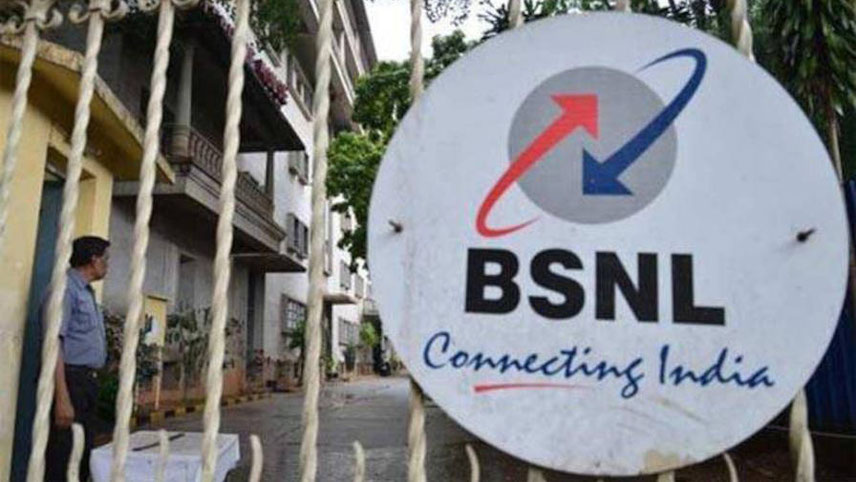
BSNL’s land holdings in Mumbai are any realtor’s delight
Banner of protest
The problems that the government will encounter go beyond that. On 26 August, the employees union of the state-run BSNL opposed the government’s plan to monetise 2.86 lakh kms of optical fibre laid under the BharatNet project as well as 14,917 mobile towers owned by it and MTNL. The union alleged that sale of mobile towers to corporates is the beginning of privatisation of BSNL and MTNL. If monetisation of these assets is allowed, then the government’s next target will be to monetise 7 lakh route km length of optic fibre, it added. It called upon all BSNL employees to organise lunch hour demonstrations throughout the country the next day.
The banner of protest raised by telecom unions is the first such action against the NMP. Trade unions say that the argument of the government that the ownership of these assets will continue to remain with the government itself, is nothing but a “sugar-coated poison”.
That may be loud talk, characteristic of TUs. The fact remains that while the Modi government’s decision to monetise its assets may be a brave move, a leap of faith of sorts, it is replete with risks, given our inadequate regulatory and institutional framework which will guide the process. With the ghost of crony capitalism hovering around some recent deals and the fear of monopolies/duopolies emerging in various sectors (as is being witnessed in telecom), Modi will have to ensure that the idea does not turn into a school for scandal.
-
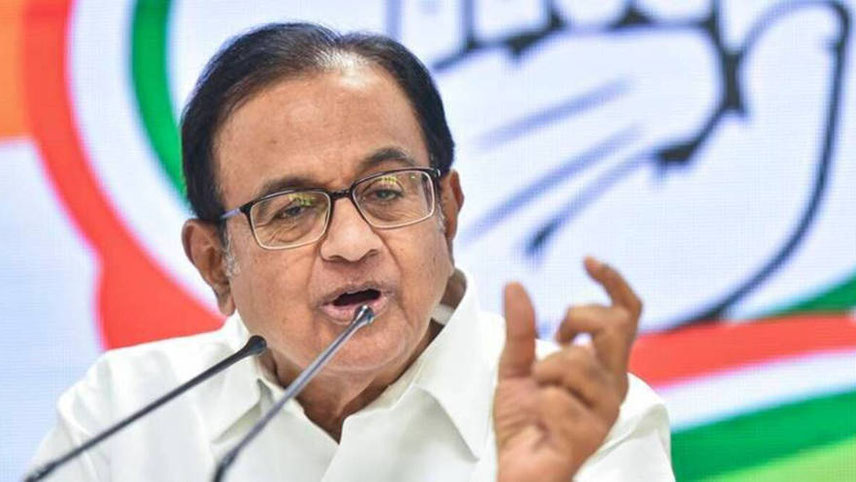
Chidambaram: asset-stripping exercise
Some questions
Political rivals of the Modi government, like former FM P. Chidambaram, have raised a series of questions on the National Monetisation Pipeline plan. Observers feel that the government should answer these questions
• If the government expects the revenue of Rs6-lakh crore in the next four years from monetisation, why is it not revealing the total capital investment in the identified assets?
• For roads and railways, there is PPP model in place, what is the difference between it and the proposed monetisation?
• If these assets are leased out for 50 years, would they not be depreciated over the years, worth nothing on their return?
• Will there be provision to avoid asset stripping by the lessee?
• What steps are being taken to avoid monopolies or duopolies?
• Has the government decided that the Railways is no longer be considered a strategic sector?
• Has the government examined the impact of the policy on prices of goods and services in the sectors concerned?
• Will the NIP alone fund the infrastructure? If so, how is the revenue of Rs6 lakh crore sufficient to fund the Rs100 lakh crore infrastructure programme announced by the Prime Minister in his Independence Day speech?
